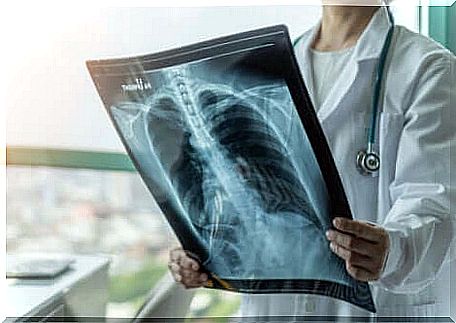Pulmonary Tuberculosis – Causes And Symptoms
Today there are means to cure pulmonary tuberculosis if it is recognized and treated in good time. Otherwise, this disease can cause serious complications, and even death.
The pulmonary tuberculosis presented at the beginning of the 20th century a serious public health problem. In fact, died one estimate of 7 people in it. Thanks to the development of certain drugs, the disease has been under control since the 1940s.
However, outbreaks of this infection do occur from time to time. As a result, pulmonary tuberculosis remains a problem, especially since there is a multi-drug variant that is difficult to treat.
Pulmonary tuberculosis: what is it?
Pulmonary tuberculosis is a disease caused by a bacterium called Mycobacterium tuberculosis. In most cases, this microorganism settles in the lungs. But it can also affect other organs, such as the brain and kidneys, as well as structures of the spine.
An important aspect is that pulmonary tuberculosis disease and latent infection are different. The first is conventional pathology. The second is a condition in which the bacteria are in the body but do not cause the pathology as such. It is as if they are resting in the body.
As a rule, the immune system is able to fight the inhaled bacteria and prevent them from multiplying. However, the pathogens remain inactive in the body and usually do not cause any signs of a latent infection.
In this way, these bacteria can remain inactive in the body for many years or even a lifetime. However, when the immune system is weakened, they become active, multiply, and cause the potentially fatal disease of pulmonary tuberculosis.

Causes of Pulmonary Tuberculosis
Pulmonary tuberculosis is a contagious disease, but not while it is latent. The infection occurs through the transmission of droplets when a sick person coughs or sneezes. Many people recover without serious discomfort. In some cases, however, the infection reactivates after just a few weeks.
Risk factors
Some people are at greater risk of developing pulmonary tuberculosis. These include the following groups:
- Infants: Children younger than 2 years old.
- Elderly: People who are older than 60 years.
- People with a weakened immune system: Either from illnesses such as HIV and diabetes, or from taking medication or being treated with chemotherapy.
The risk of pulmonary tuberculosis increases when a person is malnourished, lives in unsanitary conditions, or comes into contact with infected people. Outbreaks are also more common in communities where there are more HIV patients, homeless people, or where there are resistant strains.
Factors that pose no risk
As we mentioned earlier, a person with a latent infection does not pass the disease on to others. Likewise, tuberculosis is not transmitted through contact, such as shaking hands or sharing personal items (toothbrush, cutlery, etc.).
The disease also does not spread by sharing food or drink, kissing, using the same toilet, or coming into contact with an infected person’s bedding. It is not necessary to disinfect surfaces that a person with pulmonary tuberculosis has touched.
Symptoms of pulmonary tuberculosis
The most common symptom of pulmonary tuberculosis is a strong cough, which can last for three weeks or more. This cough is usually accompanied by bloody sputum. The affected person feels very unwell and has the following symptoms:
- Chest pain
- Weakness or fatigue with loss of appetite leading to weight loss
- Fever and chills with night sweats
- Chest rattling and difficulty breathing
Some people also have so-called Hippocratic fingers when they are at an advanced stage. These have a wider, drumstick-like shape and a different angle of nail growth.
In addition, it is also common to have painful or swollen lymph nodes in the neck and other parts of the body. Pleural effusion, that is, water in the lungs, can also occur. In some cases, other complications will occur, including but not limited to: inflammation of the liver, brown or orange body fluids such as tears and urine, rash, and blurred vision.

Early detection improves the prognosis
Patients with latent infection have no symptoms or feel unwell. However, a skin or blood test will be positive for those affected if they are tested for any other reason. Even if there are no symptoms, it is important to start treatment to prevent the disease from getting worse .
If pulmonary tuberculosis is detected and treated early, the prognosis is excellent. Symptoms usually go away within two to three weeks. However, if the disease is not treated appropriately, this usually has fatal consequences.









